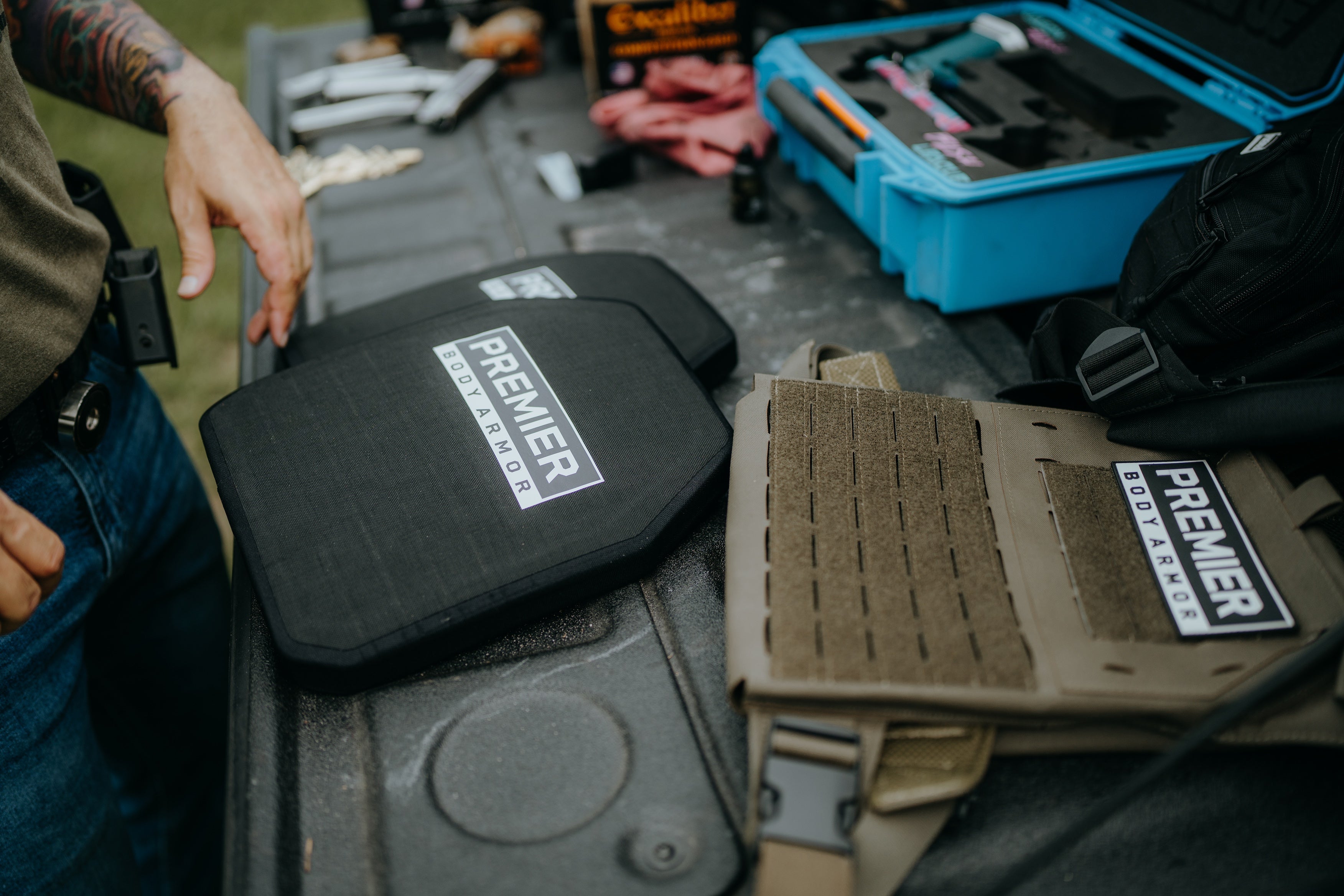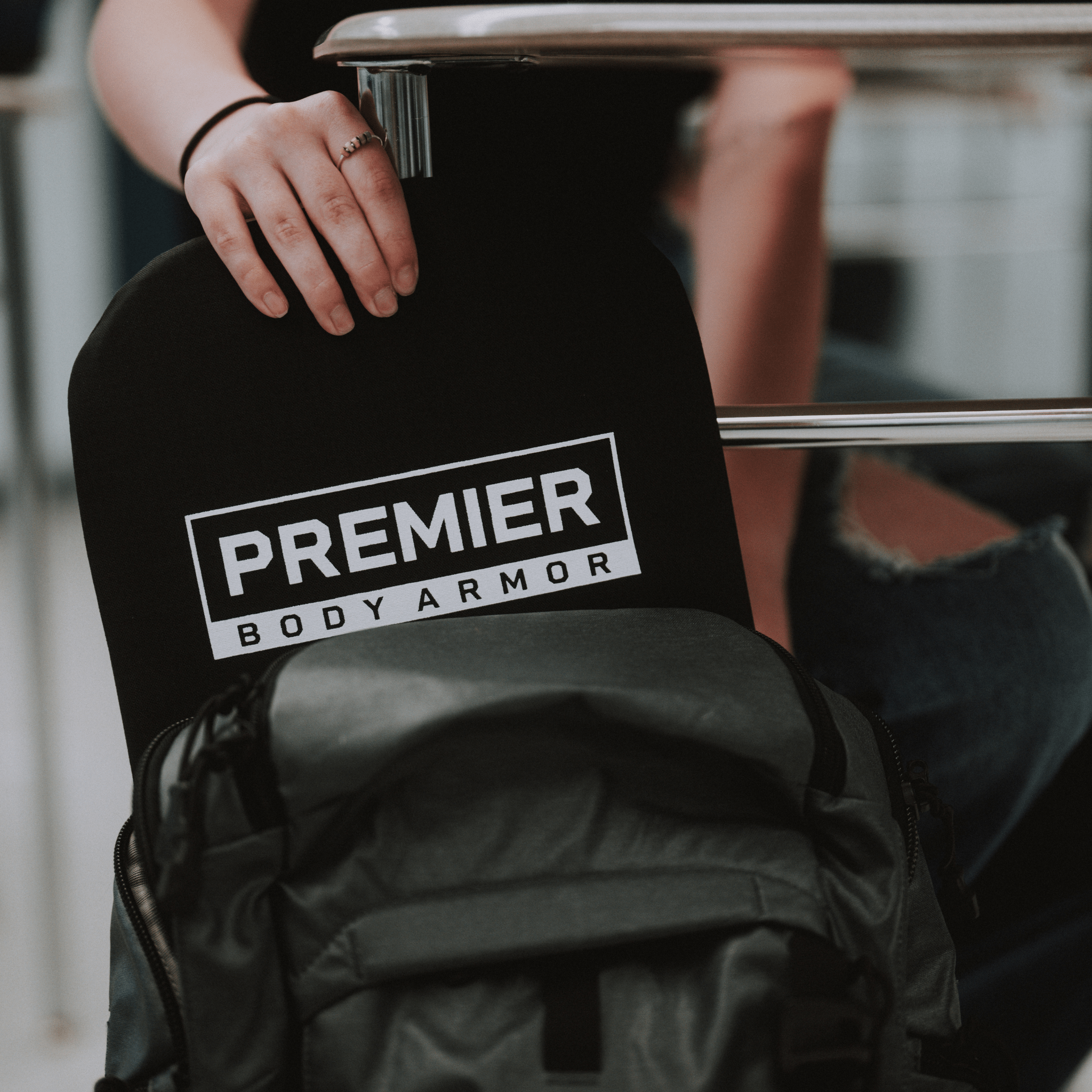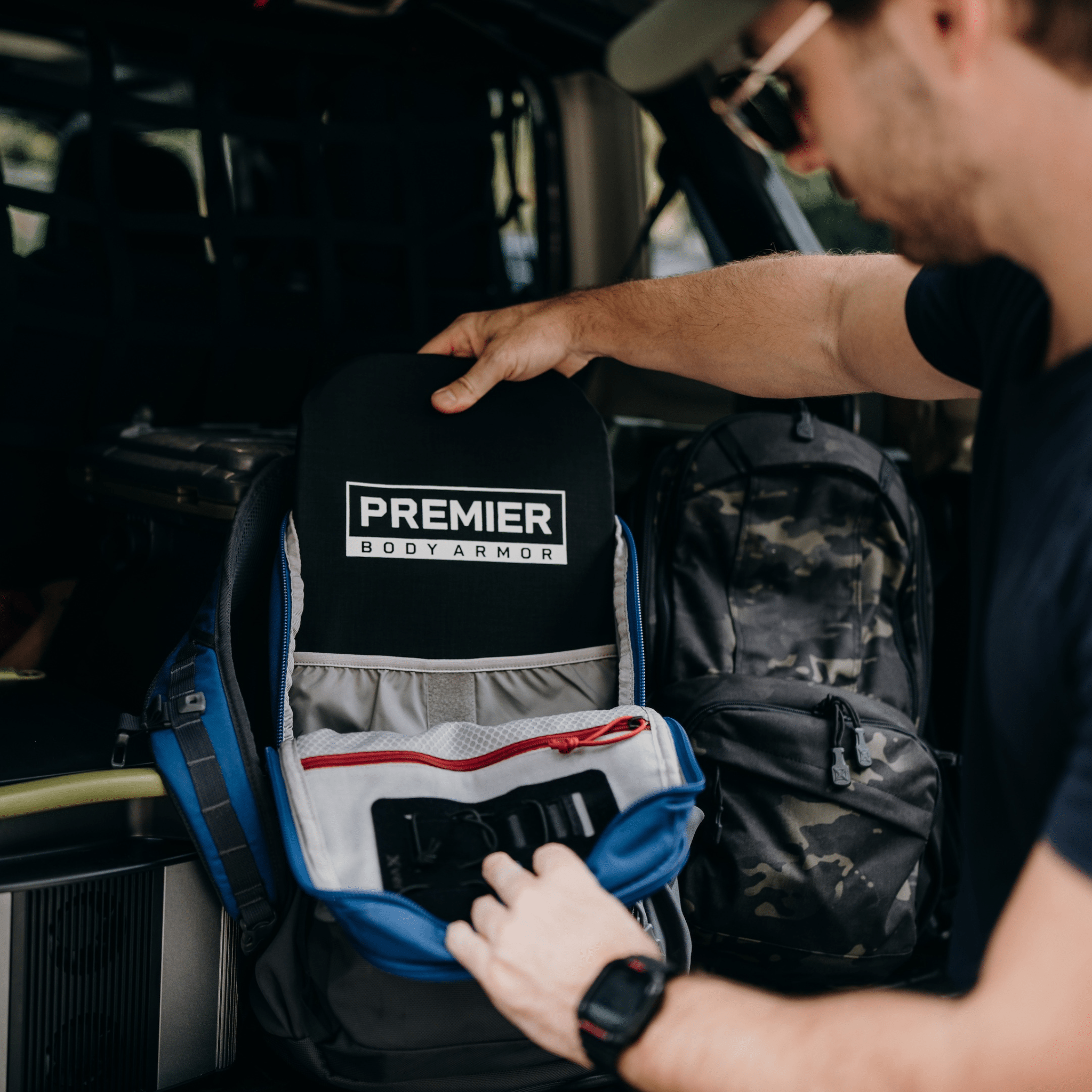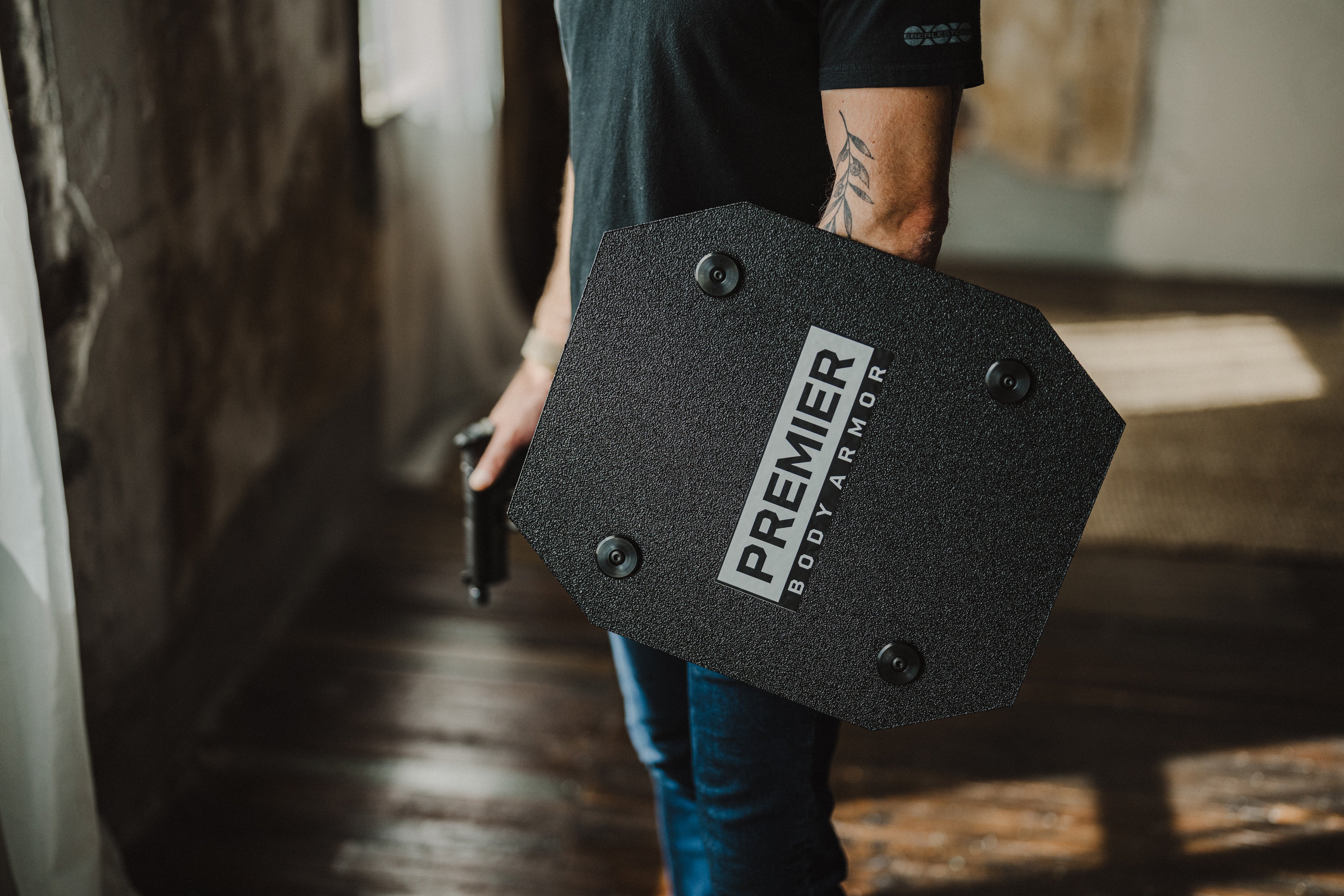How to Reinforce Doors for Maximum Security: An Expert Guide
Doors are your first line of defense when it comes to home security, though alarm systems and window security are certainly important, too. They’re the first thing most intruders will test, and if your door fails, everything else you’ve done for security is instantly compromised.
That’s why learning how to reinforce a door is one of the most important steps you can take to protect your home. Effective door security goes well beyond installing an upgraded lock.
In this guide, we’ll harden every weak point: slab, reinforced door frame, hinges, strike, and hardware. You’ll see simple DIY upgrades you can do today and higher-end improvements that build a layered defense. Follow the steps below to turn a regular door into a barrier that actually buys you time to respond and protects the people inside.
At A Glance
- Best base: solid core, steel, or fiberglass slab + reinforced door frame.
- Critical upgrades: deadbolt upgrade + heavy-duty strike plate with 3" screws into studs.
- Layered defense: door reinforcement kits, security hinges, door barricade/security bar.
Choose the Best Door and Frame for Security
A secure entryway starts with the door and frame. A flimsy slab in a weak frame is no match for a determined intruder.
For an exterior door, choose a solid core door, a steel door, or a fiberglass door. All three materials give you far more resistance than hollow-core or lightweight alternatives. For maximum protection, pair the door with a reinforced door frame designed to resist splitting or kicking.
Remember, a burglar doesn’t need sophisticated tools to get past a weak door. A well-placed kick against a hollow-core slab or a poorly secured frame can be enough. A quality slab in a rigid frame resists flex and keeps the latch and deadbolt engaged under load. That buys you precious seconds. It also makes every other upgrade (locks, strike plate, hinges, and glass) more effective.
Hollow-Core vs. Solid-Core: Which Is the Better Option?
When it comes to a hollow core door vs. a solid core door, the difference is pretty significant.
- Hollow-core slabs are light and cheap, but they provide almost no interior door security.
- A solid-core option is denser, heavier, and far more resistant to force, although it will be more expensive.
For bedrooms and garage entries, solid-core is the minimum. If you’re upgrading one door at a time, start with the most exposed entry first, then any interior door that protects a safe room or hallway choke point.
Exterior vs. Interior Doors: Different Strategies
Not all doors play the same role, which means your reinforcement strategy needs to vary.
- Exterior door reinforcement should focus on strength against forced entry. Think solid materials, high-end hardware, weather-resistant finishes, and upgraded locks.
- A reinforced interior door can serve as a barrier in a safe room or bedroom. These may not need to withstand weather, but they should resist blunt force impact long enough to keep you safe while you move, call for help, or barricade.
Reinforce the Door Itself
Choosing a strong door and frame is just the beginning. The next step is reinforcing a door so it can withstand real-world impacts. Think of it this way: you’re layering extra protection onto vulnerable spots so they hold up under stress. Even a solid core or steel door can fail if the hardware is cheap or the weak points aren’t reinforced.
You can use several strategies, from adding metal plates that strengthen the lock area to installing braces that spread force across the entire structure. If your door has glass, that’s another area you’ll want to protect. By upgrading these elements, you turn a standard door into something that can withstand break-ins.
Use Door Reinforcement Kits or Plates
Pre-made door reinforcement kits are fast DIY security upgrades. These usually include strike plates, hinge shields, jamb protection, longer screws, and lock reinforcements made of hardened steel.
By distributing the force of a kick or pry attempt, they make it far harder for an intruder to break through. Most kits are inexpensive and can be installed with basic tools, adding a lot of strength to your entryway.
Consider Adding Internal Bracing
If you want to go a step further, door bracing systems are worth considering. These devices install inside your home and anchor to the floor or wall, giving you another line of defense. When you brace a door, you’re essentially creating an internal barrier that reinforces the entire structure. Think of medieval doors with interior bars that dropped in place to prevent them from being forced open.
Whether you choose permanent or removable options, adding internal bracing is one of the most effective ways to reinforce a door against forced entry.
Reinforce Any Glass in the Door
Glass is fragile by nature, and any glass in your door can be a serious vulnerability. Improve door glass security by layering:
- Safety film holds shards together if the glass is shattered.
- Tempered glass reinforcement is four to five times stronger than standard glass.
- Laminated glass with an interlayer increases impact and penetration resistance.
Upgrade Locks and Strike Plates
A deadbolt upgrade is the highest-value hardware change you can make. High-quality deadbolts extend deeper into the door frame and resist picking, drilling, and kicking. Pair that with a heavy-duty strike plate to make sure that the force of a break-in attempt is absorbed by steel, not wood.
When shopping for locks, look for products with a high ANSI lock rating, which shows that the hardware has been tested for durability and resistance under real-world stress.
Together, upgraded locks and reinforced strike plates make it far more difficult for intruders to force entry. Even simple enhancements like longer screws or a properly installed plate can increase your door’s strength.
What Makes a Lock High Security?
High security lock standards include strength, durability, drill resistance, and pick resistance. Look for locks tested against drilling, bumping, picking, and forced torque. Features like reinforced pins, anti-drill plates, and hardened steel components make a lock far more resistant to tampering. Grade 1 products undergo the most demanding performance tests.
Installing a Reinforced Strike Plate
Proper strike plate installation matters more than brand. Replace small, two-screw strikes with elongated, four-to-six-screw plates. Use 3" (or longer) screws to penetrate the stud (not just the jamb; it will splinter and break under a heavy kick). This spreads impact across the frame and keeps the bolt seated. It’s a simple, low-cost upgrade backed by many police departments’ crime-prevention guides.
Secure the Door Frame and Jamb
A door is only as strong as the frame holding it. Reinforcing your door frame and improving door jamb strength are central to preventing forced entry. Even a solid steel or solid-core door can fail if the surrounding wood is weak or splintered.
To reinforce the frame, replace any flimsy jambs. You’ll find solid wood options, but metal is better. Use long screws to anchor the frame deep into the studs.
Installing a reinforced door sill and adding strike plate reinforcement helps further distribute force across the frame. Even if a burglar targets your door with brute force, the frame won’t give way easily.
Secure the Hinges Against Tampering
Hinges are another common failure point. Standard door hinges can be removed if an intruder has access to the exterior side, especially on outward-swinging doors. (All that’s needed usually is a flat-head screwdriver and a hammer.)
By installing door hinge reinforcement, you add pins or specialty screws that prevent removal and ensure the door stays secure under attack.
Would-be burglars will test every point of vulnerability. Reinforcing things like door hinges closes one of the most common gaps in door security, making it significantly harder to bypass your reinforced door.
Special Considerations for Exterior Hinges
While rare, some exterior doors have exposed hinges. That is, the hinge is located outside the home rather than inside.
For doors with exposed hinge security concerns, opt for tamper-resistant hinges. These hinges feature non-removable pins or interlocking designs that prevent removal from the outside.
Exterior doors without these protections can be opened just by taking out the hinge pins, so this upgrade is particularly important for main entrances. Hinge reinforcement complements locks, strike plates, and the door itself, giving you a layered, integrated defense system.
Use Door Barricades and Secondary Locks
Even with reinforced doors, locks, and frames, adding door barricades or secondary locking devices gives you an extra layer of protection. A security bar or door jammer can stop a forced entry attempt in its tracks, especially during home invasions or emergencies. These devices are simple to install and provide immediate reinforcement, distributing the force of a kick or push across the door and floor.
Barricades are particularly useful in bedrooms or safe rooms, providing temporary fortification when every second counts. Barricades aren’t a substitute for locks; they’re the “oh-crap” layer when you need time to move family to cover, retrieve medical kit, or call 911. Choose a device you can deploy under stress (gross-motor movement) and practice once per quarter.
For a step-by-step guide, check out our full instructions on how to barricade a door. Using these devices in combination with your locks and reinforced frame creates a multi-layered defense system that’s extremely difficult for intruders to overcome.
Barricades vs. Deadbolts: What’s More Effective?
It isn't either/or. When comparing a door barricade vs. deadbolts, understand that each serves a different purpose.
- Deadbolts secure the door day-to-day, under normal circumstances.
- Barricades provide emergency reinforcement and resists high force during a home-invasion scenario.
Barricades are often faster to deploy in a crisis and can handle brute force better than a standard deadbolt alone. Ideally, you want both: strong locks for everyday security and a barricade for emergencies.
Temporary vs. Permanent Options
Most of the security options we’ve talked about thus far are permanent. However, temporary options do exist.
Removable door security offers flexibility for renters or temporary situations, while permanent barricades or reinforcement devices provide continuous protection.
- Temporary solutions can be installed quickly during emergencies or overnight, and then removed without damage.
- Permanent systems integrate with the door, jamb, frame, and floor to give you maximum strength at all times.
By combining both approaches, you create a door that’s secure under normal use and nearly impervious during a crisis, showing exactly how to reinforce a door effectively.
Educate Your Family and Create an Emergency Preparedness Plan
Even the best-reinforced door can’t protect your family if they don’t know how to respond during an emergency. Creating a home invasion plan helps keep everyone safe. Not sure how to do that?
Walk through your home with family members and discuss safe rooms, escape routes, rendezvous points, and communication protocols. Make sure kids know who’s allowed to enter the home, how to lock the doors, set and trigger alarms, and contact authorities if something goes wrong. Ready.gov offers plain-English templates to help you organize contacts, meeting spots, and comms.
Emergency preparedness goes beyond having a plan and running through drills. Everyone needs to understand your home’s security system, know which doors are reinforced, where the weak points are, and be ready to act quickly.
Consider going over legal guidelines for defensive measures in your state, like self-defense tools or devices. Resources like our guides for talking to your kids about home invasion and the legality of self-defense weapons by state can help you make informed decisions.
Looking for More Ways to Secure Your Home? Premier Body Armor Can Help
Reinforcing your doors is just one part of a comprehensive home security strategy. For more home security tips and guidance on protecting your family, Premier Body Armor offers preparedness guides and safety gear designed to keep you prepared.
Remember, securing your home’s doors definitely involves hardware, but the goal here is to create a multi-layered defense for your family and property. The right doors and frames are important components of that defense. Also consider reinforcing locks, strike plates, hinges, and glass, and adding barricades to reduce the risk of forced entry.
Ready to harden your entry? Start with the deadbolt/strike upgrade, then add a barricade. Browse our EDC options and home-defense guides to dial in the rest of your setup.
FAQs
What’s the fastest upgrade that makes a real difference?
Install a deadbolt upgrade and a heavy-duty strike plate with 3" screws into the stud. This low-cost change dramatically boosts kick-in resistance.
Tempered vs. laminated: which glass is better for door security?
Tempered is stronger than standard glass but shatters into small pieces. Laminated holds together after breakage, slowing penetration, better for doors and sidelights.
Do I need special hinges?
On outswing doors, use security hinges (non-removable pins or security tabs) and long screws into framing to stop pin-removal attacks.
Are door reinforcement kits worth it?
Yes. Good kits add extended strikes, hinge shields, and jamb sleeves that spread force across the frame. They’re solid DIY security upgrades for one afternoon of work.
Barricade or deadbolt, which should I choose?
Both. The deadbolt handles daily security; a door barricade gives emergency reinforcement during a home-invasion scenario.










Leave a comment